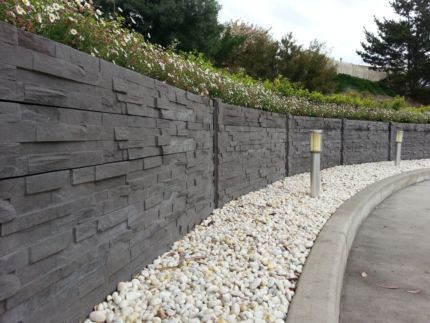
Classifications Of Retaining Walls And Why You Want Them
May 18, 2021Retaining walls are grouped based on the substances that they’re made of. Retaining walls may be constructed from concrete, vinyl, block, rock, or another material that’s suitable for its own purpose. Additionally, there are differences in the way that these partitions are constructed depending on if they are permanent or not.
Classifications Of Retaining Walls And Why You Want Them

In cases where walls are essential to divide several properties, they’re categorized in accordance with their substances first. The various materials include concrete, brick, sheet rock, sandstone, stonework, metal, gypsum plaster, concrete block, stone, and wood. Every one of these materials have their own benefits and disadvantages when it comes to application.
Classifications Of Retaining Walls And Why You Want Them
When constructing retaining walls, the materials are primarily selected depending on the strength and durability they provide. And so, bricks, stones and metals are utilized . But some walling applications may involve the use of particular substances initially, such as gypsum or adhesive. Bricks and stones are more durable than metal and sheet rock, but they wear out more easily. Metal and sheet rock are equally durable enough to last for ages.
Classifications Of Retaining Walls And Why You Want Them
Temporary walls and retaining walls are both constructed from other materials. Temporary walls are employed to be able to divide a space, while retaining walls are used as a wall that’s permanently placed on the property. These partitions are most commonly used so as to divide spaces between houses or businesses. Retaining walls made of concrete are usually the best option because they’re the strongest, most durable, and most durable stuff around.
Classifications Of Retaining Walls And Why You Want Them
In the event of commercial structures, retaining walls made from concrete are an absolute necessity. If you’re not sure about the best material for your job, you should contact a professional builder that will be able to assist you pick out the most suitable one to suit your requirements. Concrete retaining walls are able to withstand anything organic, man-made, or even supernatural in character. This makes them a great choice for all sorts of companies, both large and small.
You should think about the climate in your region when choosing the sort of wall which you would like installed. For instance, if you are in a place that experiences temperatures of varying degrees during different areas of the year, you might wish to select materials that can handle the extreme heat and cold. Retaining walls that are created from materials that aren’t able to handle extremes of temperature may crack, buckle, and collapse under the weight. For this reason, you should make sure to select the ideal material for your individual area before starting your job.
Various types of materials are used for retaining walls, but there are a couple things which are widely used. The most common substance used is concrete because it is powerful, durable, and resilient. Another frequent kind of material that’s used to construct these partitions is flagstone. These materials are both durable and strong. They are also customizable, which makes it effortless to create walls that are exactly what you need.
As you can see, there are lots of distinct ways that you may classify retaining walls according to where they are placed. If you want to receive the best cost, it helps to understand the materials that are used for building the wall. Once you learn about all the alternatives available, you’ll be able to get the perfect wall to your yard or business building.
Whether you desire a retaining wall that’s put up in an area which experiences high levels of humidity or that is prone to flood, you have plenty of alternatives. Regardless of which kind of climate you reside in, it is possible to install a wallsocket. When you would like to learn the classifications of retaining walls, it’s helpful to understand that a few walls are grouped based on the distance from the base to the surface. Classifications can be horizontal or vertical. This info will help you narrow down the selection of walls which are most suitable for you.
If you want to know the classifications of retaining walls in line with the distance from the floor to the very best, you have to go one step further. You have to understand that the categories also take into account how deep in the ground the base is. In case you’ve got a wall that’s several feet deep in the ground, then you want to make sure that you don’t decide to put in a wall in your lawn that is too tall. On the flip side, if you put in a wall that is only a few feet in thickness, then you will not have to be concerned about how deep your walls are at the floor since they will not go very deep.
If you want to learn more about courses of retaining walls, all you need to do is turn on your computer and do a little research online. When you find out about various kinds of classes of retaining walls, then you can choose which wall kind is most appropriate for you. If you want to know the significance of each course, you merely need to look up on line pictures of various kinds of walls that it is possible to construct in your lawn. With all of the data which you can find online, you should be able to ascertain which kind of wall you would like and why. Once you understand the meaning of those terms, you are going to know whether or not you need to engage an expert in order to create the wall for you.
